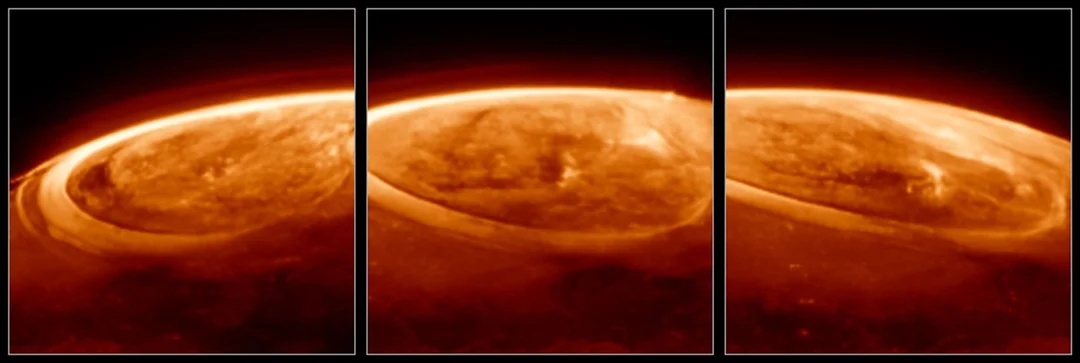
Webb Telescope Unveils Jupiter’s Roaring Auroras: A Dance of Light and Mystery
Prepare to be amazed as the James Webb Space Telescope (JWST) unveils spectacular, never-before-seen details of Jupiter's auroras, phenomena hundreds of times brighter and more energetic than Earth's Northern and Southern Lights. This infrared spectacle challenges existing knowledge and raises intriguing questions about Jupiter's magnetic field and atmospheric interactions.
Observations captured by JWST's Near-Infrared Camera (NIRCam) on December 25, 2023, have left scientists like Jonathan Nichols from the University of Leicester in awe. "What a Christmas present it was – it just blew me away!" Nichols exclaimed, highlighting the unexpected speed and dynamism of the auroral changes.

Jupiter's Auroral Secret: More Than Just Solar Winds
While Earth's auroras are primarily triggered by solar storms, Jupiter boasts an additional energy source: its volcanic moon Io. Io's volcanoes eject charged particles into space, which are then captured by Jupiter's powerful magnetic field and accelerated towards the planet's atmosphere. These particles, colliding with gas atoms, create the mesmerizing auroral displays.
JWST's sensitivity has allowed astronomers to observe the rapid variations in auroral emissions, particularly from the trihydrogen cation (H3+). This emission is proving to be far more dynamic than previously understood, offering crucial insights into the heating and cooling processes of Jupiter's upper atmosphere.

A Hubble-Webb Mystery: The Case of the Missing Light
Adding to the intrigue, simultaneous ultraviolet observations by the Hubble Space Telescope revealed a puzzling discrepancy. “Bizarrely, the brightest light observed by Webb had no real counterpart in Hubble’s pictures,” Nichols explained. “This has left us scratching our heads. In order to cause the combination of brightness seen by both Webb and Hubble, we need to have a combination of high quantities of very low-energy particles hitting the atmosphere, which was previously thought to be impossible. We still don’t understand how this happens.”
This unexpected finding suggests that existing models of Jupiter's atmosphere and particle interactions are incomplete, prompting further investigation.

Unraveling the Jovian Enigma
The research team is now focused on dissecting the Hubble and Webb data to reconcile this mystery and explore its broader implications for Jupiter's atmosphere and surrounding space environment. Future Webb observations, combined with data from NASA's Juno spacecraft, promise to shed more light on the root cause of this enigmatic emission.
These groundbreaking findings, published in Nature Communications, showcase the power of the Webb Telescope in unlocking the secrets of our solar system. From distant galaxies to the dazzling auroras of Jupiter, Webb continues to revolutionize our understanding of the universe and our place within it.
What do you think this new discovery means for our understanding of planetary atmospheres? Share your thoughts and theories in the comments below!